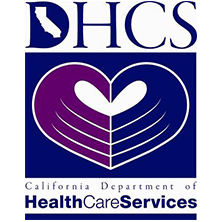Women with Eating disorders are a big health care problem in the United States. Becoming a woman is filled with many challenges, especially in this day and age. We are often faced juggling school, family, friends, work, financial challenges, and, to top it all off, our own personal struggles within. All of the daily stressors are compounded by internal feelings of inadequacy, control, self-esteem while the world seems to dictate to us how we should look, act and respond to stress.
We live in a society (peers, school, religious group, work, doctors and the media) that tells the world that the ideal woman’s body should be rail-thin, even though very few women fit this “representation”. How can women with eating disorders escape these images and messages without having women shape their own perceptions of how every woman should look? The world seems to think that women can completely control their own body size and it is in a woman’s power to achieve this ideal body image. It is normal for some women to have feelings of inadequacy and not feel completely confident with our bodies. To some, though, these thoughts can become invasive and obsessive leading to low self-esteem for women with eating disorders.
Women with Eating Disorders take many forms, anorexia, bulimia, binge eating, and compulsive overeating. Women with eating disorders who suffer from anorexia restrict their food intake and may regularly engage in binge-eating or purging behavior (i.e. self-induced vomiting or the misuse of laxatives, diuretics, or enemas). Women with eating disorders who suffer from bulimia have recurrent episodes of eating a larger quantity of food than most people in a given amount of time and feeling a sense of lack of control during these episodes. Women who suffer from compulsive overeating have recurrent episodes of eating a larger quantity of food than most people in a given amount of time and feeling a sense of lack of control during these episodes.
Women with eating disorders have the obsession with food and gaining weight can take over their life. Their thoughts and life controlled by feelings of a need to control their body image and control their intake of food.
What would seem to be normal everyday experiences for women become challenges for women with eating disorders: How can I eat out with friends and family? How can I restrain what I eat today? Where can I hide my food? How do I hide purging from everyone? This is all compounded by feelings of guilt, being less than, and isolation. These diseases can be overwhelming for the individual and seem impossible to understand by the outside world. The severity of this disease can lead to long-term health problems, mental deficiencies and even death. The difficult part of this disease is that despite knowing these consequences of the behavior, it seems impossible to change the relationship with food and body image.
Women with eating disorders have become an epidemic, especially among teenage girls. Fueled in large part by the media’s promotion of thinness as a physical ideal for young women, experts say that the problem of women with eating disorders has escalated over the past few decades. Girls are beginning to diet in elementary school and may be binging, purging, or starving before they are ten years old. This is one reason why some schools assign teachers breakfast and lunch duty; to make sure those students- not just little girls- are eating what they should be. Because women with eating disorders reflect complex psychological issues, there is no clear cause or solution to the problem. However, experts do agree that there are clear connections between women with eating disorders and media influence.
The media is often quoted as a scapegoat for the increase in women with eating disorders. In Catherine Oxenberg’s opinion: “Women (with eating disorders) don’t set out to become anorexic, they begin by thinking they’re too fat because everywhere they go, the media is telling them that they are right” (www.CatherineOxenberg.net). This assumes that the causes of women with eating disorders are simply triggered by an individual feeling overweight, which is not the case. Women with eating disorders have many causes; some evidence suggests that eating disorders can exist without this pathological fear of being overweight. If these effects of the media are obvious, then why is it that only 1-3 percent of women suffer from an eating disorder? Or, are women with eating disorders a part of something deeper, a bigger problem?
Some experts do agree that women with eating disorders tend to be the symptom of larger psychological distress, and they are often accompanied by severe depression, self-mutilation (as in “cutting” practices), and other addictions. While many teenage girls eventually recover from their eating disorders to live a healthy lifestyle, many others continue their disordered eating habits. Some, up to 15 percent, will die. While women with eating disorders affect a large portion of the population, especially in the United States, most sufferers are, indeed, adolescent women. Again, due to a variety of factors, including peer pressure and exposure to mainstream fashion magazines, teenage girls seem uniquely susceptible to developing one of the manifestations of disordered eating. But remember the research; only 1-3 percent. Just as there is no agreed upon single cause for women with eating disorders, there is no exclusive cure for anorexia, bulimia, or compulsive overeating, but treatment usually includes some form of psychotherapy. Psychological treatment helps to align the mind back to what we refer to as “normal”.
For women with eating disorders, binge eating used to be thought of as gluttony; eating just because there was food to eat. Unlike binge drinking, binge eating is also classified as a psychological disorder. A binge eater eats for comfort, according to some sources. Other experts explain that binge eating begins when a person eats until they’re full. After a while, women with eating disorders feel that they require more food to become full. This feeling is not entirely psychological, as the physiology of the stomach expanding assists the person to fall deeper into binge eating, which sometimes leads to obesity. Binge eating can also lead to bulimia, as the afflicted person will recognize that they are eating too much but do not wish to gain weight. It is not uncommon to diagnose a person with more than one eating disorder (www.health.gov).
For women with eating disorders to recover, a woman needs to make a decision to do whatever it takes to change her relationship with her eating disorder including eating healthfully, attending meetings and finding a support group. At Safe Harbor Treatment Center for women, which specializes in dual-diagnosis and co-occuring addictions, we realize that this is a difficult task, and we do not ask that you do this alone. We understand the pain and frustration that can come with recovery and know that recovery itself can seem impossible. The women at Safe Harbor are here to help you and guide women with eating disorders through the recovery process and help you sustain a health lifestyle and body image. We are here to help women with eating disorders make a true commitment to health and move women along some of those difficult recovery roads.
We at Safe Harbor will help guide you from morning until night starting with a health breakfast and creating a food plan. We understand that eating properly can be the most difficult part of recovery for women with women with eating disorders, so we offer other aspects to help such as individual sessions and group therapy with women with eating disorders who are walking through the same difficulties and trained staff. Our clinical staff is trained to work with young women who suffer with eating disorders and work with their clients on the underlying issues so that clients are able to break free from their disordered eating. We are here to help women with eating disorders get on a good cycle with food and yourself.START YOUR JOURNEY WITH
SAFE HARBOR HOUSE
(310) 861-4157
Contact Us Today
Verify Your Insurance




